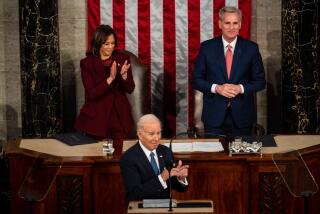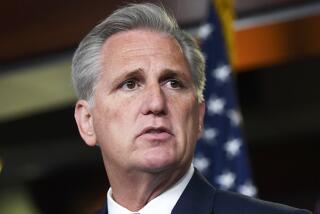Dealing With National Debt
- Share via
At the present time, there seems to be no mention of any historical precedent for our nation’s current predicament. If there were, the name of Harry S. Truman would be heard most often.
Former President Truman saw this country through the end of World War II, a staggering national debt, unemployment, hunger in newly liberated countries, confrontations with a hostile Congress and innumerable domestic issues. Just as we defeated the Axis powers in 1945, democracy and our form of government have now prevailed over what was the Soviet Union.
Today, we could take some cues from Truman’s Sept. 6, 1945, 21-point plan for economic reconversion and his State of the Union and budget message to Congress in 1946. These speeches exemplify Truman’s direct, hands-on approach.
The national debt in 1945 was $260 billion and the gross national product (GNP) reached $212 billion. In other words, our national debt was just over 22% greater than our GNP. In comparison, the national debt for 1991 is estimated to be $3,617 billion, versus a GNP of $5,616 billion. Our current estimated national debt is 36% smaller than our GNP, or about half what it was in 1945 in relative terms. Of courses, we have to recognize significant differences in the interest rates paid on the national debt in 1945 versus today. But the real message should be that our national debt, while huge, is not insurmountable.
Time and again, Truman demonstrated his activism and concern for our citizens when he urged the Congress not to be timid as it faced the reconversion of our wartime economy. It is incumbent upon the President to learn from the events and leaders that have preceded him.
DAVE ELDER, Assemblyman, D-San Pedro
More to Read
Get the L.A. Times Politics newsletter
Deeply reported insights into legislation, politics and policy from Sacramento, Washington and beyond. In your inbox three times per week.
You may occasionally receive promotional content from the Los Angeles Times.










